Exploring Quan Ba
Quan Ba, one of the eight districts within Ha Giang province, has lush green valleys with meandering rivers, dotted by quiet minority villages. The district’s landscape also has wooded hills, tranquil meadows, hidden caverns, and vibrant orchards of orchids, plum, peach, and persimmon trees, alongside an array of medicinal plants.
With a population of just over 50,000 inhabitants, predominantly consisting of ethnic minorities, Quan Ba’s focal point is Tam Son, the district’s primary town. Here, the spirited local market convenes every Sunday, hosting a vibrant atmosphere for the exchange of both goods and social interactions among these diverse communities.
The entrance to this valley means driving over the Quan Ba Pass, also recognized as Quan Ba Heaven’s Gate. This pass is an integral part of the Ha Giang Loop route, guiding travelers through the district. For those inclined to venture off the beaten path, going into the villages and embracing the serenity of the river offers an enriching experience.
How to get there
To reach Quan Ba, your first destination is Ha Giang City, the capital of Ha Giang province. The most convenient way to get there is from Hanoi, using either overnight sleeper buses or daytime limousine buses.
After a 6-hour journey to Ha Giang, you can begin the Ha Giang Loop. Your choices for this adventure include:
As Quan Ba is just 50 km away from Ha Giang City, you will visit it on your first day, regardless of whether you choose to complete the loop in 3, 4, or 5 days.
What to do and see in Quan Ba
1. Quan Ba Heaven Gate
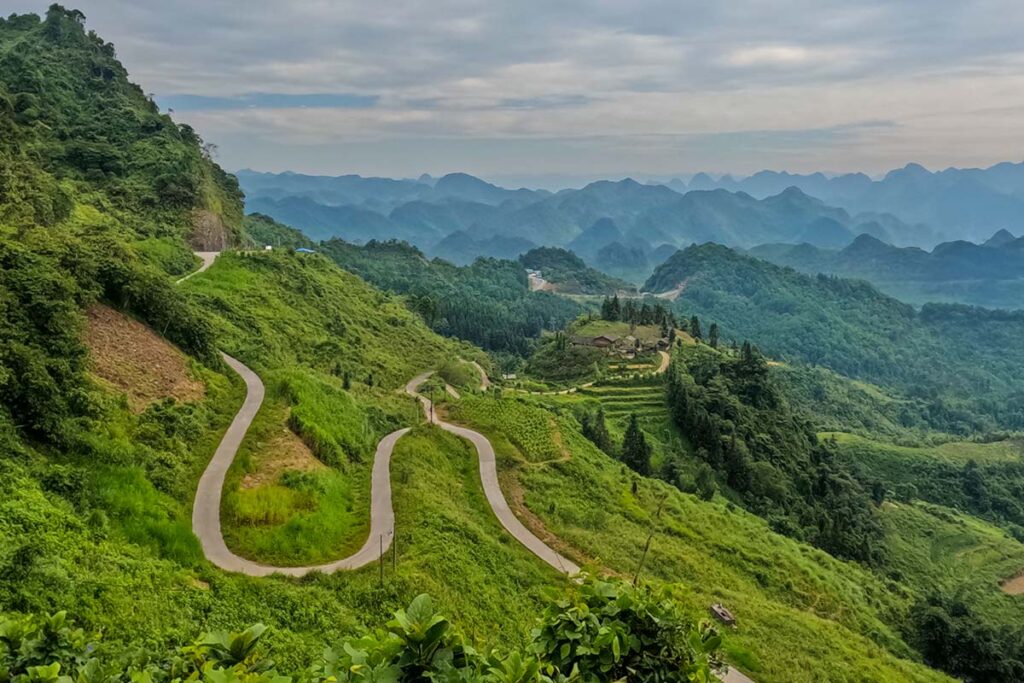
Often referred to as Quan Ba Pass, this is one of the first stops on the Ha Giang Loop. Offering picturesque vistas, it is a great spot to pause and enjoy the surrounding landscape. At the summit, a coffee shop stands to relax with a cup of coffee or hot chocolate and soak in the views.
2. Quan Ba Twin Mountains
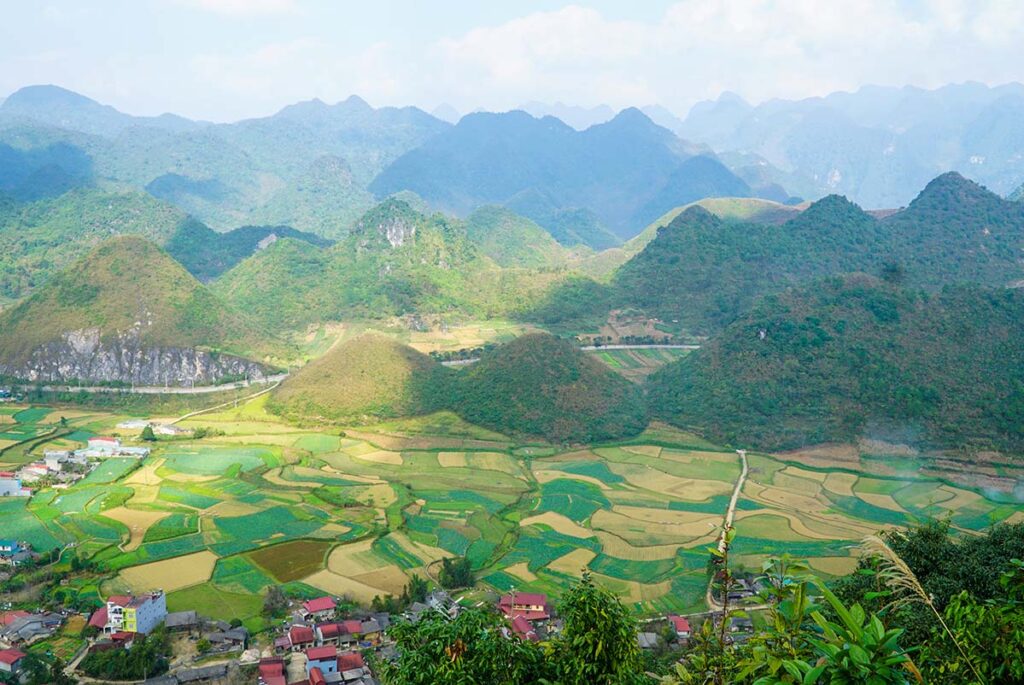
The Twin Mountains are two near-identical mountains and steeped in Hmong legends that offer an iconic sight. The most favorable view is found from the midway point of Quan Ba Pass, showcasing their enchanting symmetry.
3. Lung Tam weaving village
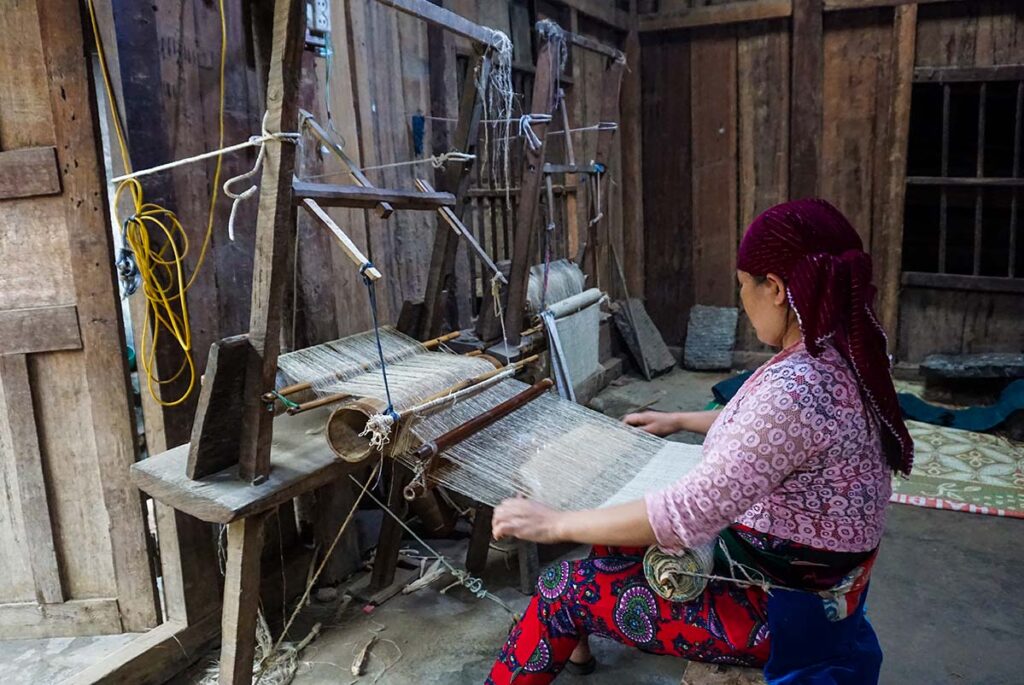
Nestled beside a river, this Hmong village offers an immersive experience into local ethnic life. The area’s beauty and the village’s reputation for weaving make it an intriguing visit, providing insight into traditional craftsmanship.
4. Lung Khuy Cave

Perched atop the mountains, the Lung Khuy Cave rewards you with both captivating views on the way to the entrance as well as stunning formations of stalactites and stalagmites inside. While not huge, the cave’s intricate features make it worth a visit.
5. Lung Tam Valley

Adorned with lush greenery, rolling hills, and a meandering river, this valley is a picturesque retreat. Exploring ethnic minority villages, including the earlier mentioned Lung Tam, adds to the cultural experience. Drive along the riverside road brings you higher up with views over the valley and river.
6. Quan Ba Central Market
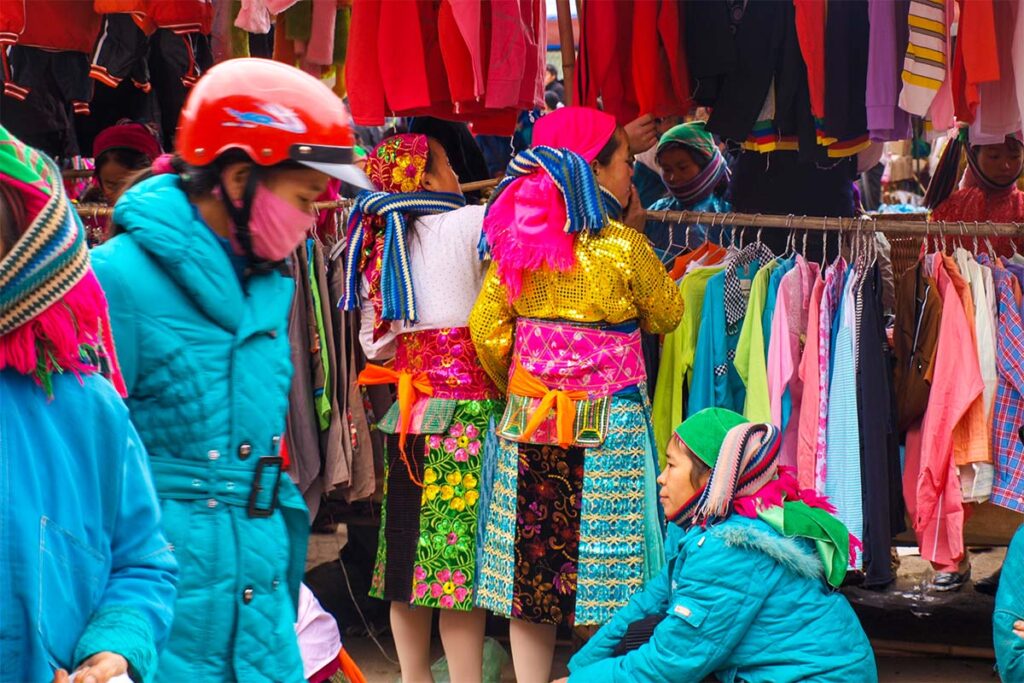
The markets in Ha Giang are a unique oppurtunity to learn from the local cultures. In Quan Ba, the Quan Ba central market is the hub of ethnic minority culture and comes alive every Sunday in Tam Son town. It’s an authentic opportunity to witness local trade and socialization, drawing communities from neighboring villages.
7. Nam Dam Village
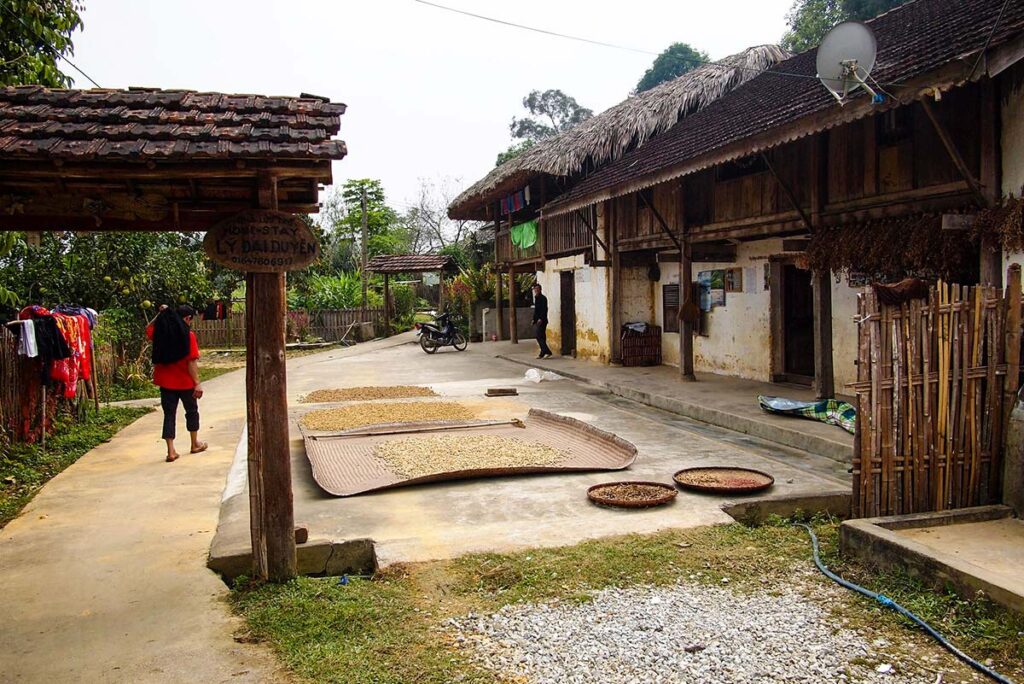
Nam Dam Village is a picturesque community in the Quan Ba district, known for its traditional wooden stilt houses and rich cultural heritage of the Dao ethnic group. Surrounded by rolling hills and terraced rice fields, the village offers a tranquil setting for experiencing local life and customs. You can engage in activities like trekking, handicraft workshops, and even stay overnight in a local homestay to immerse yourself in the unique culture and natural beauty of the area.
8. Nai Nam Dam Waterfall
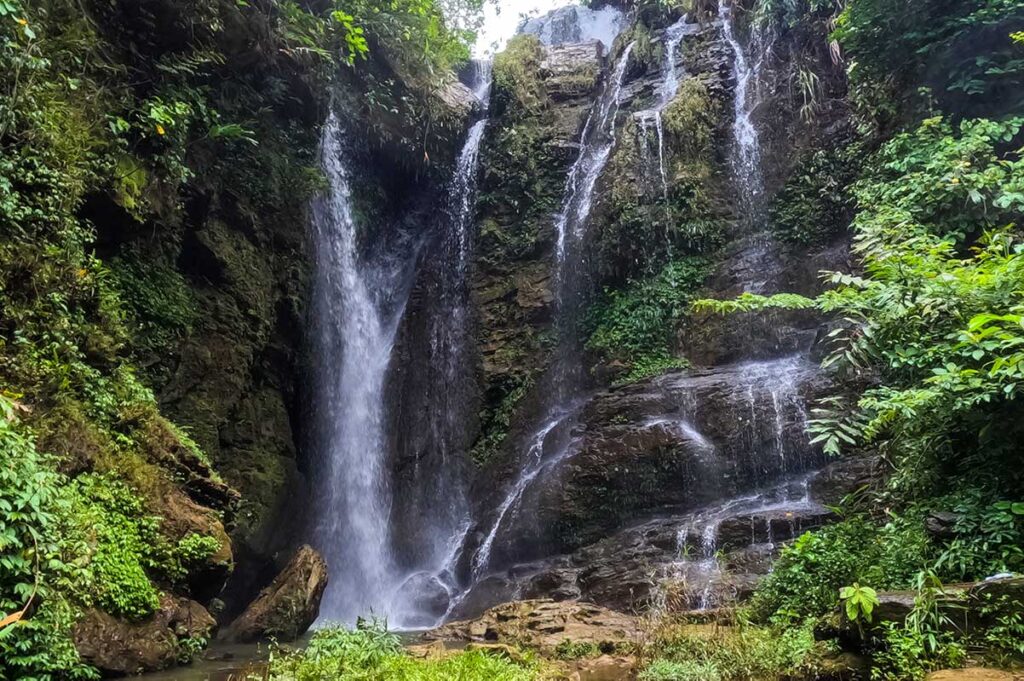
Right next to Nam Dam Village, cascading gracefully down the mountainside into the valley below, Nai Nam Dam Waterfall boasts serene beauty. Though a slight detour from the main road of the Ha Giang Loop, its allure justifies the visit for an off-the-beaten-path encounter.
9. Thach Son Than Buckwheat Flowers Fields
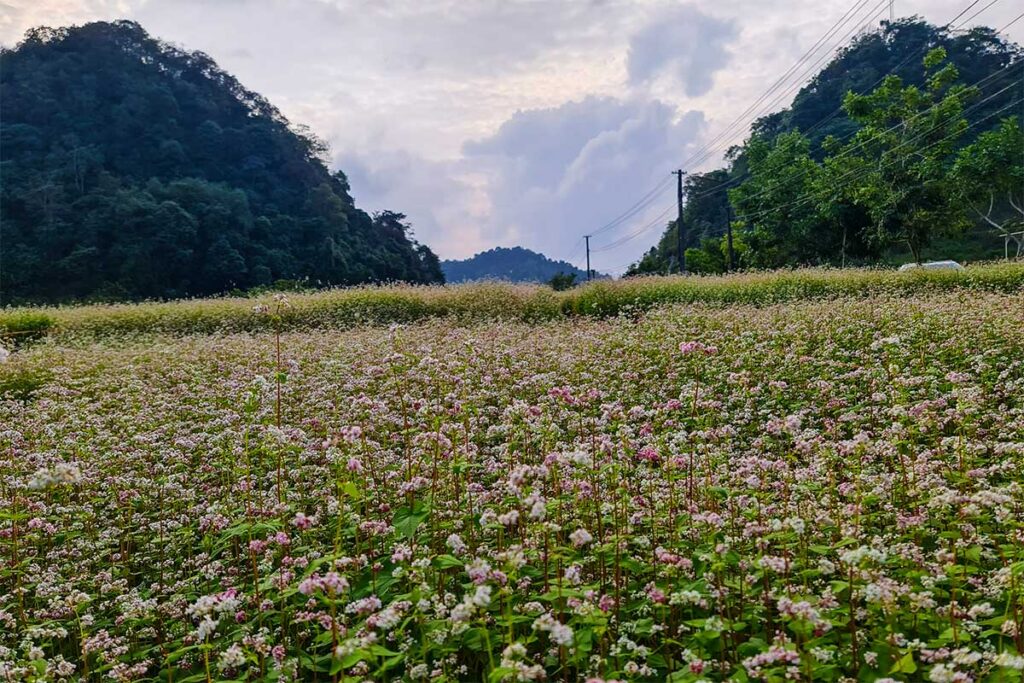
In the enchanting buckwheat flower season in Ha Giang, Quan Ba’s best blooming site, Thach Son Than, flourishes with vibrant fields. This natural spectacle paints the valleys in captivating hues.
10. The Lonely Tree
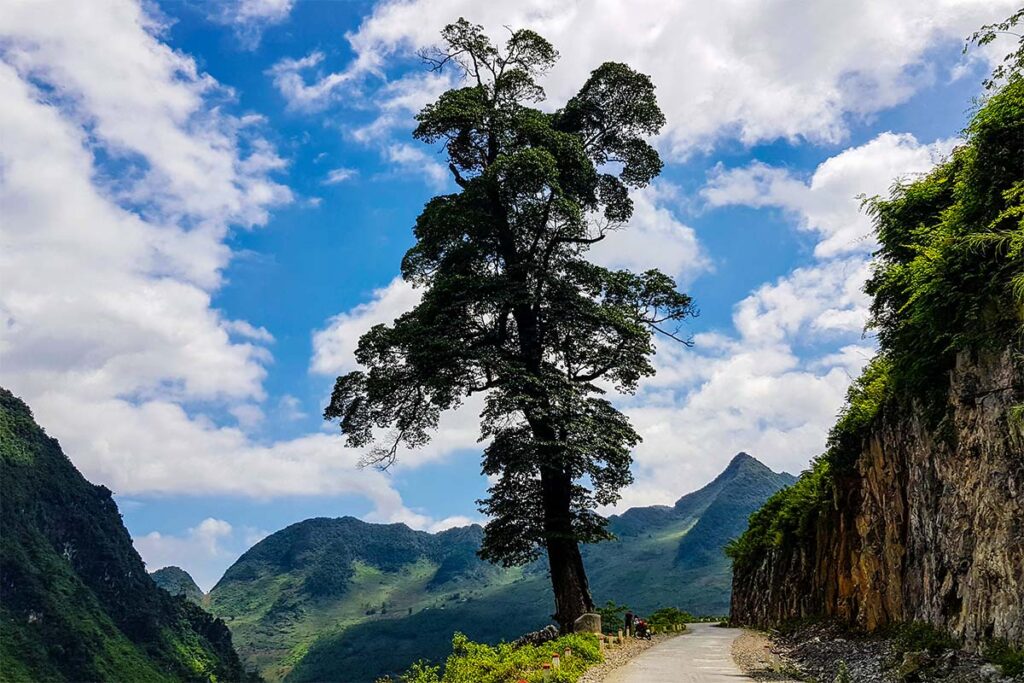
This remarkable solitary tree stands starkly against the backdrop of a steep cliff, between the route connecting Tam Son Town and Yen Minh. Evoking intrigue and curiosity, the Lonely Tree has become an iconic stop in Quan Ba.
Accommodations in Quan Ba
Staying in Quan Ba
Due to its proximity to Ha Giang City, just 50 km or a 2-hour drive away, many travelers on the Ha Giang Loop tend to bypass staying in Quan Ba. As this often results in arriving here in the late morning or early afternoon when starting from Ha Giang City, it’s common for travelers to opt for accommodations further away along the route.
Nonetheless, Quan Ba offers various lodging options. To fully embrace an authentic experience, consider staying in a local homestay situated in a neighboring village outside Tam Son town.
While some of these homestays can be booked through online platforms, others may require an on-the-spot discovery as you explore the area. While your homestay often includes meals, limited dining options can be found in Tam Son town for those seeking variety.
Recommended accommodation in Quan Ba
- Toong Homestay: Immerse yourself in local life at Toong Homestay, where you’ll experience the genuine charm of Quan Ba’s community. Live like a local and engage with traditional customs and cuisine for an authentic stay.
- Diễn Homestay: Unwind in the tranquility of Diễn Homestay, offering a serene escape amidst Quan Ba’s landscapes.
- Hong Thu Homestay & Bungalow: Experience the natural beauty of Quan Ba at Hong Thu Homestay & Bungalow. Unwind in the bungalow’s peaceful setting, with breathtaking views.
- H’mong Village Resort: If you’re looking for more comfort, altough way more pricy. This resort provides cozy rooms with beautiful views of the surrounding valley and mountains.

